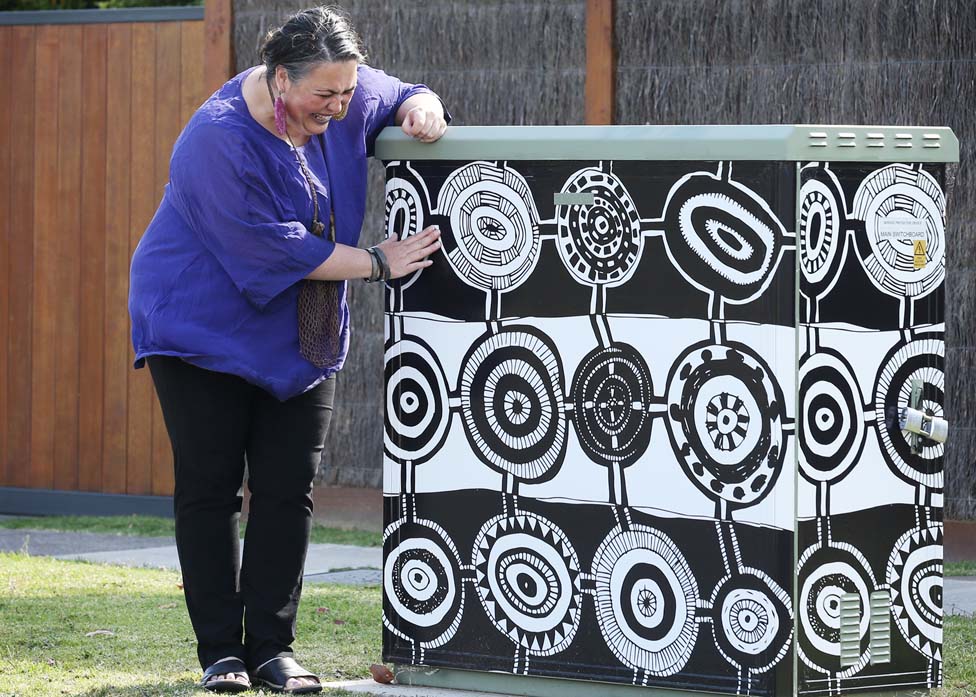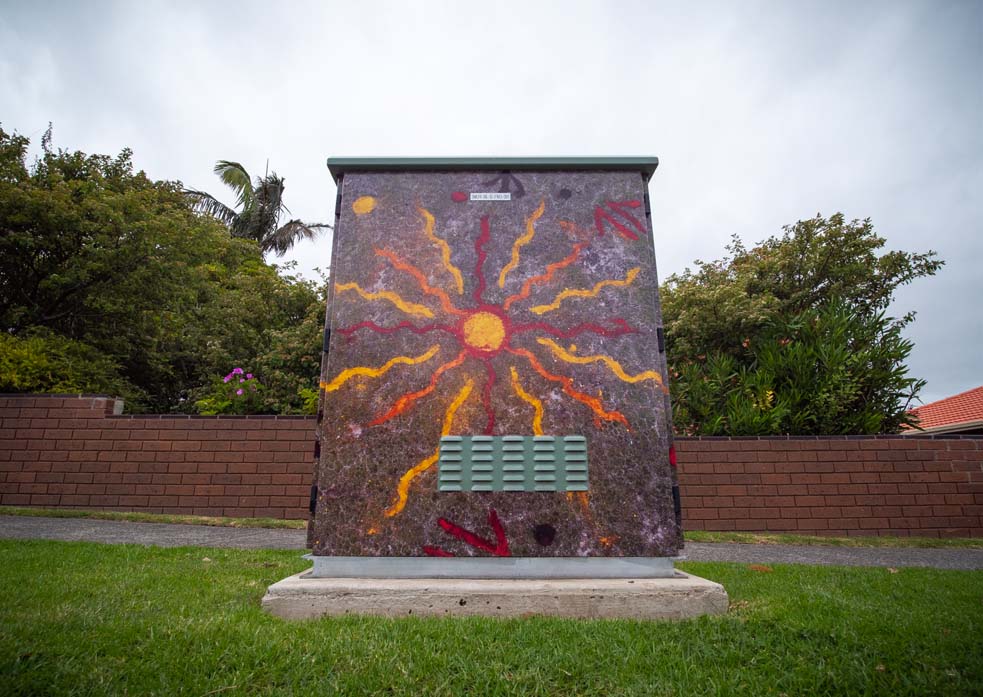
By Erica Louise Photos Supplied
Six Mornington Peninsula Aboriginal and Torres Strait Islander groups have revitalised 16 lifeless NBN optical fibre cable cabinets with striking new artworks. This is due to an innovative art project initiated by the Mornington Peninsula Shire.
Recognising the importance of Aboriginal storytelling through art, the Mornington Peninsula Shire collaborated with NBN Co., and called upon six local Aboriginal groups, the Bunurong Land Council Aboriginal Corporation (BLCAC), Balee Group, Baluk Arts, Bunjilwarra, Living Culture and Willum Warrain to complete the task of preparing artworks for the nodes.

Tracey-Lea, Arts & Cultural Development Coordinator at the Mornington Peninsula Shire, said “The Shire had received complaints from the community after seeing NBN nodes being tagged and covered with graffiti. We were asked whether there was a possibility of engaging local artists to decorate the cabinets with murals.”
Seeing an opportunity to boost Aboriginal art in the public and increase the awareness of Peninsula-based Aboriginal and Torres Strait Islander groups as highlighted in the Shire’s Art and Culture Plan and Reconciliation Action Plan, Tracey-Lea contacted NBN Co to discuss the idea of decorating node cabinets with Aboriginal artworks.

The NBN Aboriginal artwork project is the first of its kind in this region. It sees all Aboriginal groups working with the Shire collaboratively. The Bunurong Land Council Aboriginal Corporation led the project as the traditional custodians and worked with the Mornington Peninsula Shire.
The Peninsula’s Aboriginal and Torres Strait Islander community is diverse and made up of people with heritage and ancestry dotted across Australia.

“Bunurong people are excited and proud to share their stories and connection for this project on their traditional lands,” said Dan Turnball, CEO of the Bunurong Land Council.
As the Mornington Peninsula Shire supports self-determination and decision-making it gave each group the responsibility of selecting their own artists who could submit artworks of their choice. High quality photographs were taken of the original works, which were then printed onto anti-graffiti coated vinyl and wrapped around the nodes by a local installer.
The stories told through the nodes’ artworks are not limited to ancestral tales. One of the traditional stories is Glenn Shaw’s “Bush Potato Vine” depicting the natural food source for many Aboriginal people who live on and around the coastline of the Southern Australia mainland and Tasmania. Heather Kennedy’s “Coming out of COVID” celebrates the joy and freedom felt by the whole community coming out of lockdown.
While in theory, the concept of decorating the NBN nodes sounds simple, it took two years to bring the Aboriginal artwork project to life. Lengthy approval processes, countless meetings and multiple complexities were involved. Despite this, the art initiative is a community success.
“As well as supporting the artists financially, particularly through trying times during COVID lockdowns, we’ve seen is a great sense of pride. Some artists have not seen their work displayed in a community space before. This project means so much to them.”
While there are over 350+ NBN nodes located on the Peninsula, those chosen for the program were prone to graffiti and tagging. The 16 Aboriginal art nodes are evenly spread out, with two or three per council ward, although some are tucked away.

“There are three nodes located next to schools, which has been great for students. School groups have been able to connect with the artwork in their areas, and learn more about the stories created by the artists.”
The Aboriginal art nodes can be found in Balnarring, Dromana, Flinders, Hastings, Mornington, Mount Eliza, Red Hill, Rosebud, Rye, Somerville, Sorrento, Tootgarook and Tyabb.
Each node has a unique QR code, directing viewers to more information about the story, the artist and the local organisations involved. The Mornington Peninsula Shire is also developing a PDF map, making it easier for locals, visitors and tourists to locate each node.
Read more about the Aboriginal art node project by visiting the Mornington Peninsula Shire’s Art & Culture website: artsandculture.mornpen.vic.gov.au.
